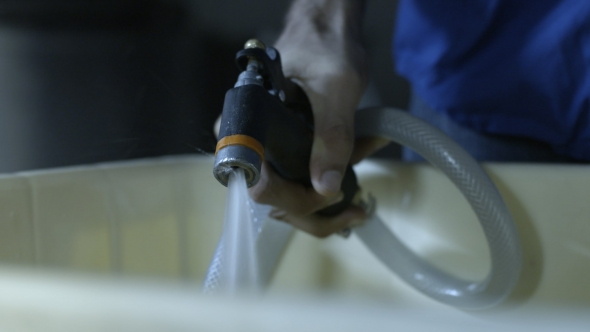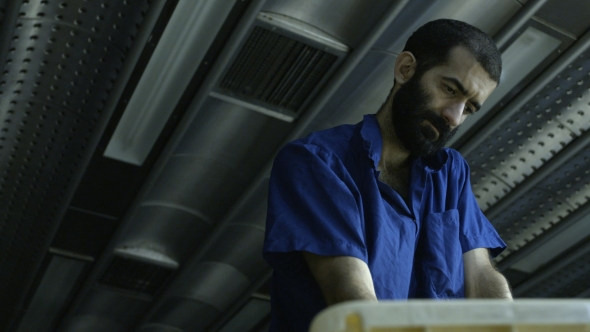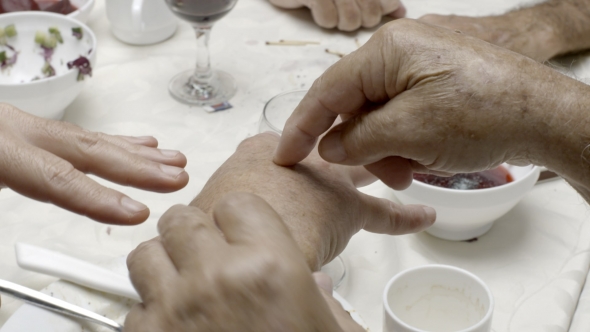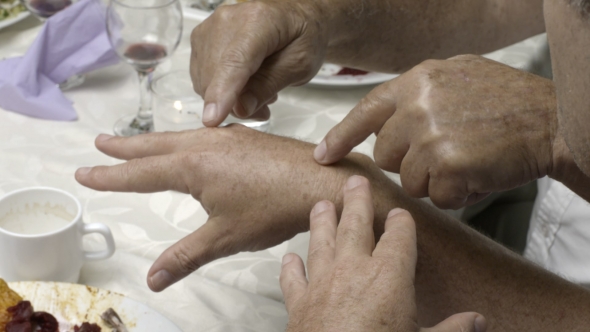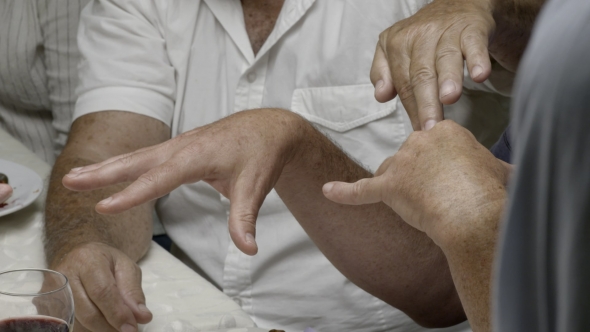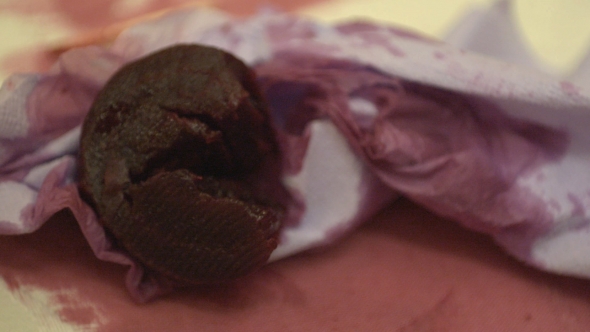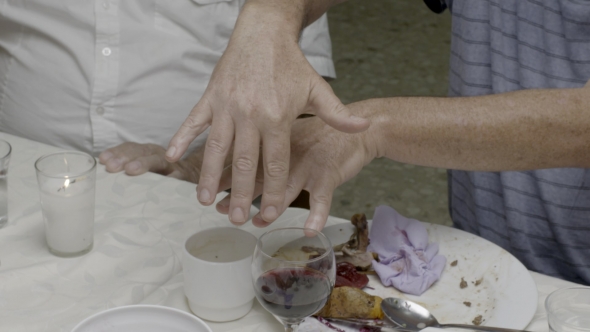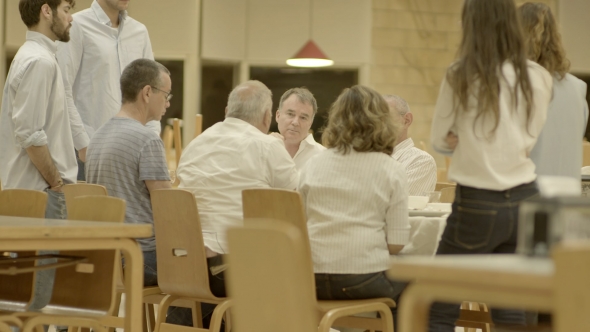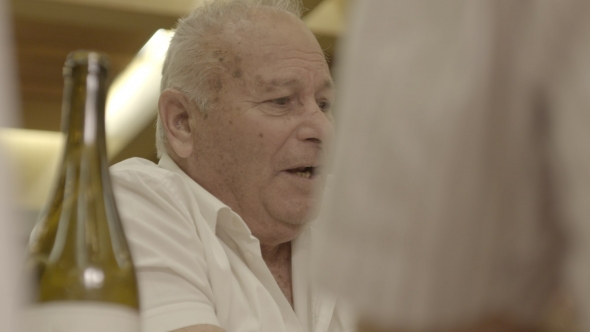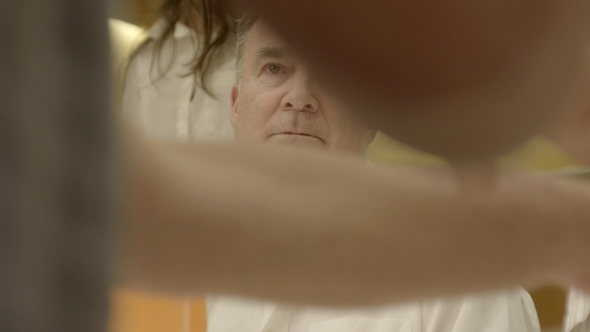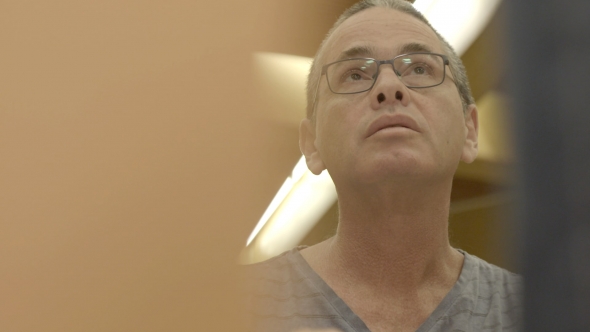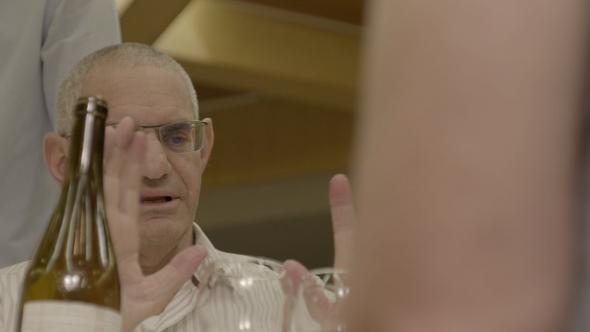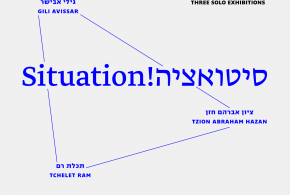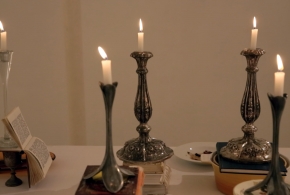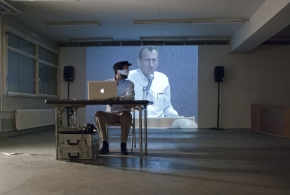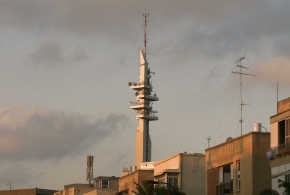
Tzion Abraham Hazan, Saluki, Kibbutz Be’eri Gallery, February 2019
In the exhibition at the gallery in Kibbutz Be’eri, the artist goes back to questions of identification and affinity in civil societies whose identity is largely related to the military. The concept of identification contains a sense of confusion, the possibility of incorrectly identifying a friend as foe. What are the conditions that generate affinity, and can the experience of empathy be expanded beyond the usual boundaries of self, physical likeness, common language, and association group?
In the exhibition in Be’eri the artist presents a video shot in the Kibbutz last summer. The participants are four members of Kibbutz Be’eri and a local audience of non-actors. The scene describes a meeting around a table, covered in a white cloth, in the central dining hall. The four protagonists have been in a battle in the Lebanon war, near the Saluki stream, where they shot at each other and caused the death of their commander. Seated at the table are the commander’s signal operator, his deputy, who has headed the unit which had opened fire, the deputy signalman, and the shooting soldier. They describe what has happened, from memory, arguing about the details and trying to reconstruct the events of the battle with the utensils on the table. The tablecloth, the dishes, the food remnants, and the table become a battlefield. Questions float up to the surface. It is unclear whether they have been silenced or if this is the recurring conversation every time they meet. Who is to blame? What were the orders? What prompted the break in communications that caused them to identify each other as the enemy? Could they have acted otherwise?
This show draws its power from the local community, using the Kibbutz’s dining hall, the heart of the community, as a stage set and its members as actors.
Text: Ziva Yelin, curator
